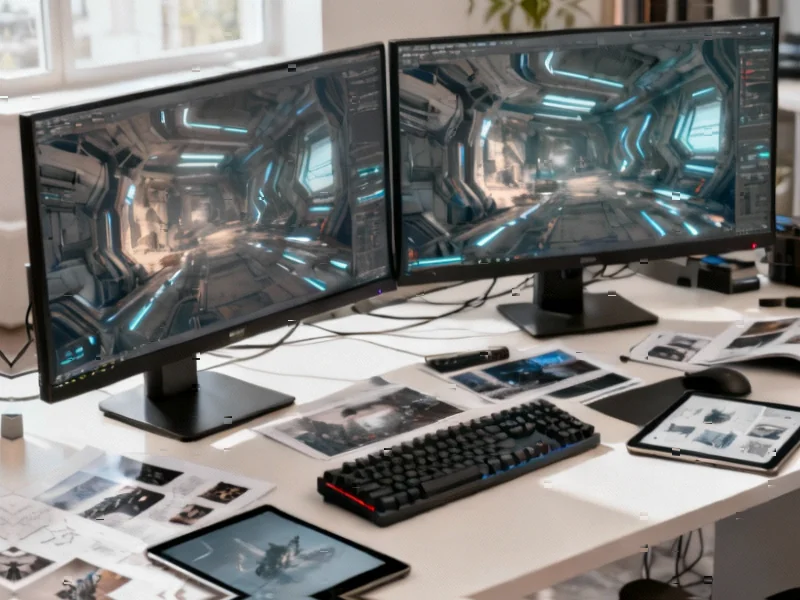According to Gizmodo, a massive political battle is brewing in the AI industry with two competing super PACs preparing to spend over $150 million to influence the 2026 midterm elections. The pro-innovation faction “Leading the Future” launched in August with plans to spend more than $100 million backing anti-regulation candidates, backed by Andreessen Horowitz, OpenAI president Greg Brockman, and Palantir co-founder Joe Lonsdale. Their first target is New York assembly member Alex Bores, who co-sponsored state-level AI safety legislation. Meanwhile, a new network of super PACs led by former Democratic congressman Brad Carson is forming to counter them with roughly $50 million, supported by Anthropic employees and AI safety activists. The new group is so focused on fighting Andreessen Horowitz that they’ve joked about calling themselves “z16a” – the backward spelling of the VC firm’s “a16z” nickname.
The great AI schism
What we’re seeing here is the AI industry‘s fundamental philosophical divide finally spilling into real political warfare. On one side, you’ve got the “move fast and break things” crowd – venture capitalists and companies like OpenAI who see regulation as innovation-killing bureaucracy. On the other, you’ve got the safety-first camp led by Anthropic, founded by former OpenAI employees who literally left because they thought the company wasn’t taking safety seriously enough.
And here’s the thing: both sides learned from the crypto industry’s playbook. When crypto super PAC Fairshake spent $135 million in the 2024 elections, they basically bought themselves favorable regulations and even presidential pardons. Now the AI industry is saying “hold my beer” with even bigger checks. We’re talking about an industry that barely existed five years ago suddenly becoming one of the biggest political spenders in America.
Anthropic’s safety crusade
Anthropic has been the odd one out in AI from the beginning. While everyone else was racing to release the most powerful models possible, Anthropic was actually studying problems like sycophancy in language models – that tendency for AI to tell people what they want to hear, which has allegedly contributed to serious mental health crises. They were the only major AI company supporting California’s early regulation efforts and kept their distance from the Trump administration when everyone else was cozying up to the White House.
But critics call this “doomerism” – basically using safety concerns to create regulatory moats that prevent new competitors from emerging. Is Anthropic genuinely concerned about AI safety, or are they just trying to regulatory capture the industry? Honestly, it’s probably both. The beautiful thing about regulatory battles is that you can dress up self-interest as public-spiritedness and nobody can really prove you wrong.
The political money arms race
We’re looking at a minimum $150 million just between these two groups, and that’s before other players jump in. Brad Carson says he wants to match Leading the Future’s $100 million, which means this could easily become a quarter-billion-dollar fight. For context, the entire 2020 presidential election saw about $14 billion in spending across all races – we’re talking about AI becoming a meaningful percentage of total political spending.
And the timing is everything. The 2026 midterms will happen right as AI is becoming embedded in everything from healthcare to manufacturing to national security. Whoever wins this regulatory battle could shape the technology for decades. The pro-regulation side wants something like California’s approach – actual safety requirements and oversight. The anti-regulation side wants a federal framework that overrides stricter state laws, basically creating the lightest possible rules nationwide.
What this means for everyone else
Basically, we’re all about to become spectators in the richest, most technically complex political fight in history. The AI industry isn’t just lobbying anymore – they’re building political war chests that rival entire political parties. And unlike traditional industries that might fight over specific regulations, this is a battle over the fundamental philosophy of technological development.
Should we prioritize speed and innovation, or safety and caution? It’s the same debate we had with social media, except this time the stakes are arguably higher and the players are much richer. One thing’s for sure: the outcome of the 2026 elections will determine whether AI development gets a green light or a yellow one. And both sides are willing to spend whatever it takes to make sure their color wins.




